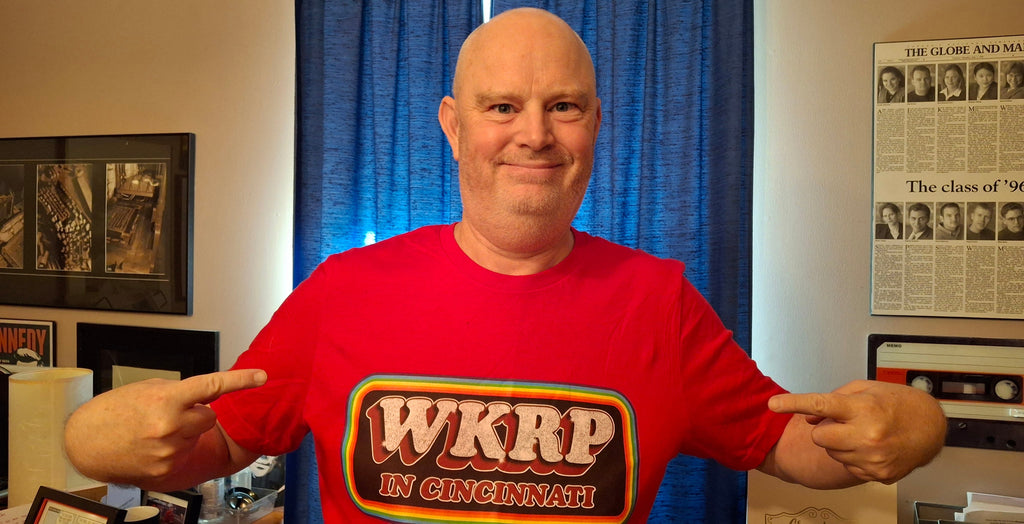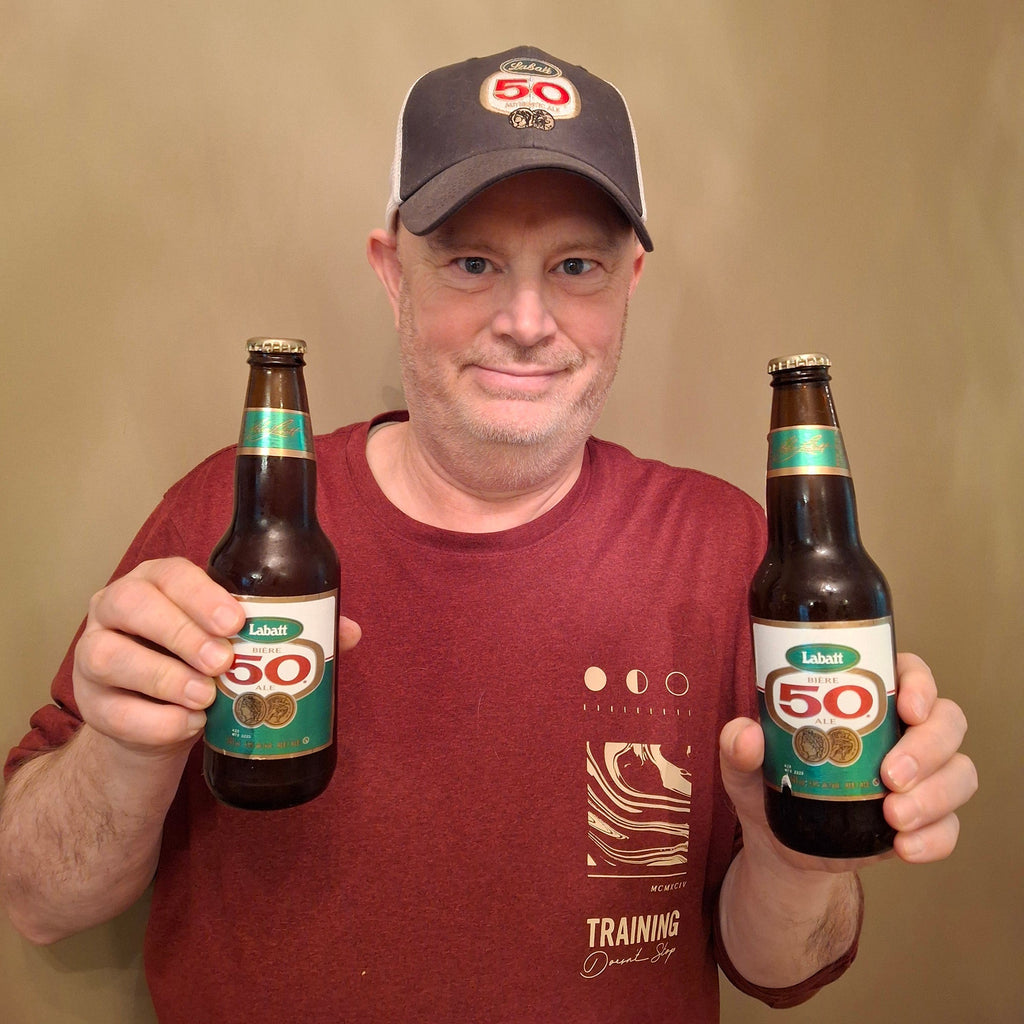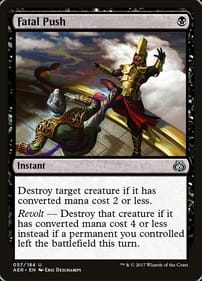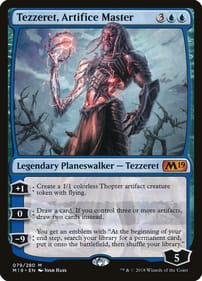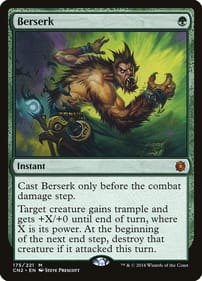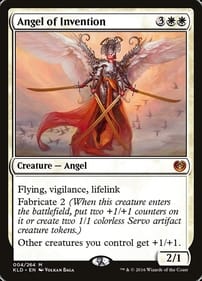The Year in Comics, 2025 Edition
By Dan Brown Another year gone! That means it’s time again to pick out the highlights from the last 12 months in the comics and graphic-novel world. As I always say when introducing the annual list, the categories are entirely my own invention, the choices reflect my tastes and no else’s, and I would love to see you chime in with your own picks! Best graphic novel of the year: Contenders include Jeff Lemire’s 10,000 Ink Stains (more of a memoir than a graphic novel, I know), Guy Delisle’s Muybridge and David Petersen’s Mouse Guard: Dawn of the Black Axe (yes, I know it will be several weeks before it appears in collected form), but I am going with D. Boyd’s Denniveniquity, which recounts the creator’s misadventures growing up in 1970s New Brunswick. I was transported back in time to a different Canada, and the book’s central character made me laugh! Best comic of the year: I’m going to say the J.Michael Straczynski-written Doctor Doom & Rocket Raccoon No. 1, in which the Latverian ruler drafts the genetically engineered rodent to help him travel back to a time before the Big Bang to understand the purpose of the universe. It includes a Jack Kirby-inspired collage, which got me excited. Local comics coming on strong: With offerings like Scott Wojcik and Jeff McClinchey’s Probed and Loaded, as well as Jeff McClinchey and Scott Brian Woods’ Black Helm Saga, it was a strong year for local creators. Speaking of which, Byron comic creator Jeff Lemire took over art duties on Skottie Young’s I Hate Fairyland this year! Best graphic novel I read this year not from this year: The second volume of Chip Zdarsky’s Public Domain came out in February, collecting previously published issues. As I wrote, “it’s a sophomore collection that enriches the storyline of an ongoing comic series, putting the characters in new and surprising situations.” Best comic adaptation of the year: The Sook-Yin Lee version of Chester Brown’s Paying For It came to London in 2025, and it stayed with me long after I saw it last winter. Brown himself sat a couple rows over. Most underwhelming comic adaptation: This is a tie between this summer’s Superman and Fantastic Four: First Steps. There, I said it. These movies were popular for about one second, and consider this: The best character in Superman is Krypto, the superdog. The most intriguing character in Fantastic Four is Doctor Doom, who is in the thing for like half a second. Blerg. Comic adaptations still hanging in: Despite all the talk of superhero fatigue, there were four such motion pictures in the domestic box office’s Top 12 for 2025: Superman (No. 3), Fantastic Four (No. 7), Captain America; Brave New World (No. 10), and Thunderbolts (No. 12). What was cool for comic fans is that for Superman and the FF movie, magazine-sized digests were published showing the stories that inspired each movie. Most confusing comic marketing: As part of the industry crossover involving the two biggest comic companies, DC released the one-shot Batman Deadpool and Marvel released Deadpool Batman. Got it? These were two different things. Creators involved with the making of these titles had to take to social media to combat the resulting confusion. Best local comics-marketing move: Joe Ollmann helped put together Bonk’d Volume 1, which collects work from Hamilton-based and -connected comic creators (Ollmann also has The Woodchipper coming out next year, his latest collection of short stories, which I am eagerly anticipating). Comic villain of the year: Alberta Premier Danielle Smith took aim at graphic novels in school libraries, particularly the ones depicting LGBTQ relationships. I thought we were done with comic witch hunts in the 1950s, but apparently not. Biggest comics-adjacent development of the year: Netflix’s animated movie K-Pop Demon Hunters has caused quite a stir, although I have yet to see it. Now, it’s over to you! Tell me in the comments about your picks for this year! Dan Brown has covered pop culture for more than 33 years as a journalist and also moderates L.A. Mood’s monthly graphic-novel group.
A Small Thing but an Important Thing
By Dan Brown I miss “the wave.” What I’m talking about has nothing to do with standing up at the right time at a sporting event, I don’t mean that wave. What I’m referring to is a tiny gesture that has everything to do with courtesy on the road and making our divided world just a little more humane. If you’re a veteran driver like I am, who has had a license for 40 years, you likely have seen “the wave.” It goes like this. Let’s say you’re stuck in busy traffic and some car from a side street is trying to ease into your lane. Good Samaritan that you are, you stop going forward to let them in. As they pull into the path ahead of you, they stick a hand out the driver’s side window and motion in your direction. That’s “the wave.” And it’s disappearing. Which is a sad comment on where we’re at as a society. The wave, as I call it, is more than just a gesture. Sometimes it’s accompanied by a smile from the other driver, who is acknowledging that by letting them in you have done them a solid. It’s a way, from one stranger to another, of wordlessly saying, “I appreciate you, man, thanks!” After all, you don’t know that other driver. Allowing them some space ahead of your vehicle is not something you’re required to do by law – I do it because I recognize they may be having a tough day, and it costs me almost nothing, maybe a few seconds, to be courteous. And some day, I’ll be in the same position. I’ll be the one having a rough time who needs a small break from the universe in the form of a kindly fellow commuter. Many people have said chivalry is dead, and the wave is one way of acknowledging the chivalrous spirit. It’s the opposite of road rage – it’s road gratitude. (It reminds me of another driving habit, flashing your high beams to oncoming cars when you pass a police speed trap, but that might be a country thing.) There’s even song about small driving kindnesses by the group Geggy Tah, who sing: All I want to do is to thank you/ Even though I don't know who you are/ You let me change lanes/ While I was driving in my car. The wave is like saying, “Thank you” when the person ahead of you holds a door open for you when you’re entering a building. They weren’t mandated by law to do that. I hope I don’t overstate the case, but it’s one of those tiny things that makes life in a city such as London tolerable, enjoyable even. And I’m worried, since I haven’t seen it for some time. I haven’t been keeping detailed notes, but I would say in the last year or two I’ve let a fair number of people in ahead of me in traffic on my daily drive to and from work. But something’s missing. No wave. That’s why I’m troubled. Those other drivers don’t appear to feel any impetus to wave anymore. I think I’m being just as gracious a driver as I’ve always been. And I’m driving as much as I always did. But I suppose it could be my fault. Perhaps people fell out of the habit during the pandemic. If so, screw you COVID-19. Or maybe distracted driving is such a problem that people aren’t paying enough attention to lift their hand for just a second or two. Maybe tinted windows play a part. Or perhaps those drivers feel entitled to butt in ahead of me in traffic. All are possible. In fairness, I will say there is one group of drivers who can still be counted on to give the wave: School-bus operators. If you want to see another human being light up on your morning commute, obey the law and stop when a school bus in the other lane has its lights flashing. And those bus drivers certainly don’t have to wave to you! Dan Brown has covered pop culture for more than 33 years as a journalist and also moderates L.A. Mood’s monthly graphic-novel group.
Merc With A Mouth Crashes Into Dark Knight’s World
By Dan Brown There’s nothing unusual about someone hiring Deadpool to carry out a contract killing. But when his latest job takes him to Gotham City, that’s when comic fans know this is no ordinary assignment. Deadpool/Batman is the latest comic-industry crossover. It shows what happens when the Merc With a Mouth (a Marvel character) crashes into the world of Batman (a DC creation). Both companies are probably hoping that by joining forces they can introduce a new generation of comic readers to the concept of industry crossovers, thus cross-pollinating different fandoms. There’s a long tradition of superhero crossovers going back to at least 1976, when Superman fought Spider-Man for the first time. Since then, they’ve become a comic fixture. (And a cultural fixture – just check out the movies like Alien vs. Predator or Freddie vs. Jason.) The story, illustrated by Greg Capullo and written by Zeb Wells, begins when Deadpool leaps through the very manor window where a bat once appeared, inspiring a young Bruce Wayne to avenge his parents by donning a batsuit. Unaware of Wayne’s secret identity, the fast-talking Deadpool explains to Wayne he has been hired to off the Dark Knight: “Some guy who dresses like a bat? Which I’m assured is grim and creepy even though that’s clearly hilarious?” (When the mutant assassin eventually comes face-to-face with the Caped Crusader, he admits he was mistaken. “Batman! You’re . .. terrifying. I hate myself for saying this, but the bat thing? It works.”) Fans of Deadpool will be happy seeing him wield a katana in each hand, and Batman devotees will be satisfied to see him brooding. It’s quite a clash of tones. In fact, those fans might find themselves questioning the book’s premise: These two don’t seem to have a lot in common, at least on the surface. Why have them become partners? Doesn’t the crazed Deadpool have more in common with someone else in the Batman pantheon . . . his nemesis, the insane Joker? Yup. Without giving too much away, the Clown Prince of Crime does make an appearance, with Deadpool labeling him a villain whose “brain is a neurospicy dopamine goblin with task paralysis and a lack of object permanence.” In other words, Deadpool and the Joker are perfect for each other. There are also backup features in this book that pair more DC heroes with Marvel protagonists. Wonder Woman teams up with Captain America, Green Arrow with Daredevil, Frank Miller’s Batman with Old Man Logan, and so on. The funniest moment among these pairings comes when Rocket Raccoon tries on Green Lantern’s ring: “Brightest day, blackest night, yada yada. Green flame on!” the genetically engineered woodland mammal cries. Considering the main story is only 25 pages long, what I would have liked to have seen is for the publishers to devote those extra 16 pages to fully fleshing out the title team-up. (There is also another crossover published at the same time as Deadpool/Batman called Batman/Deadpool, which I haven’t read yet.) With more pages, they could have expanded what is essentially an appetizer into a full-fledged meal. Also, unlike the crossovers of my childhood, the current ones are published in a regular-size comic format, so they don’t feel as special as the jumbo ones of old. Dan Brown has covered pop culture for more than 33 years as a journalist and also moderates L.A. Mood’s monthly graphic-novel group.
Slow is the New Fast
By Dan Brown In our fast-paced world, doing things slowly is not just a luxury, it’s also the ultimate power move. You’ve probably noticed we live at a moment in human history when it feels as though everyone on the planet is rushing around with their hair on fire. Just look at online retailers (think Amazon) or delivery services (like Skip the Dishes), that promise faster and faster service. Then there’s the employers who don’t want slowpokes. Bosses prize workers who can move like lighting. They hire employees who can keep to a schedule by meeting tight deadlines. In 2025, no one wants a slow hand, as the Pointer Sisters once did. “I wanna go fast,” singer Demi Lovato pleads on her comeback single, out now. Everyone everywhere wants to move quickly, to get to the next thing before too much time has elapsed. Making the most of your day no longer means savouring each moment, but packing as many moments as you can into each hour, minute, second. No one has time to waste. So is it any surprise those who move at a slower pace stand out? The first place I noticed it was on the road. Driving around London, I would get stuck behind cars that were going painfully slowly. Usually, these vehicles travelling slower than the minimum speed limit were pimped-out machines. It didn’t take long for it to hit me: Clearly, going slow is the cool thing to do. Cool people don’t rush. (Another place you’ll see this principle at work is in Grand Bend with the cars that cruise the Strip at a snail’s pace.) If you want another illustration of this truth, check out any speech on YouTube by former U.S. president Barack Obama. His trademark style was to speak deliberately, with lots of pauses. What he was saying without saying it out loud was: “I’m no fast-talker like other politicians. I choose every word carefully. I’m no fool.” He was trying to make people hang on his every syllable. Understanding Obama’s message required an attention span. He was no influencer on Tik Tok. Going slowly in today’s fast-food, fast-everything world is a power move because being slow on purpose projects a message. It says, “I’m not in a hurry, like all the normies. I’m not a slave to the clock. I’m too important to rush around. I’m not shackled to a schedule, I’ll arrive when I arrive.” People who have the superpower of being slow are above common concerns the rest of us share. They don’t have to be at the party on time, or – heaven forfend — early. Is there a bigger faux pas than arriving before all the other guests? The slow among us are our modern-day Ferris Buellers. If you recall, Bueller struck a blow against the tyranny of the clock in 1986 by goofing off for an entire school day. "Life moves pretty fast,” he said. “If you don't stop and look around once in a while, you could miss it." I don’t know about you, but I would love just one extra day to do nothing in particular, not having to worry about using my time efficiently. If it’s true life is a race to the grave, then not hurrying is also a way of resisting mortality itself. The heavy-metal group Blue Oyster Cult tapped into that idea in their 1981 song Burnin’ For You, which is partly a meditation on time: Time is the essenceTime is the seasonTime ain't no reasonGot no time to slowTime everlastingTime to play B-sidesTime ain't on my sideTime I'll never knowHaving time to burn to indulge such silly impulses as actually listening to B-sides is the ultimate luxury today. And now, if you’ll excuse me, I really should get going. I’m on a tight deadline. Dan Brown has covered pop culture for more than 33 years as a journalist and also moderates L.A. Mood’s monthly graphic-novel group.
Man, I Miss WKRP
By Dan Brown Loni Anderson died last week, and I felt a pang. It’s the same flutter of emotion I feel whenever I think about the long-gone CBS series WKRP in Cincinnati. Along with Match Game and the Muppet Show, WKRP was one of my favourite TV shows from the 1970s, and of all time. I miss it. Anderson rose to fame on WKRP as receptionist Jennifer Marlowe. The series was a workplace sitcom that elevated the workplace sitcom with realistic performances and superlative writing, but was mostly ignored by the television-watching public. Anderson played Marlowe not as the obvious ditzy blond, but as possibly the smartest person at the fictional radio station whose poise came from a wealth of self-knowledge. Jennifer knew who she was, and she was more complex than she looked – the stacked bombshell with the million-watt smile who lit up the lobby, prey for the visiting salesmen who always hit on her. She was one of the reasons I fell in love with the show, which I watched in afternoon reruns following classes when I was at elementary school. WKRP stood out from the other after-school offerings like The Edge of Night and Sanford and Son because the characters were multi-dimensional, and the way they viewed the world – as reflected in the funny lines they spouted – made sense to my developing mind. Also appearing were characters like world-weary morning man Dr. Johnny Fever, mellow evening host Venus Flytrap, ambitious program director Andy Travis, clueless station manager Arthur “Big Guy” Carlson, lecherous salesman Herb Tarlek, over-serious news director Les Nessman, and earnest cub reporter Bailey Quarters. Originally intended to revolve around Travis, the show grew into an ensemble piece that ran from 1978 to 1982, straddling the brief Carter Era as it gave way to the Reagan Years. I always considered it a tragic injustice that WKRP never got a proper series finale, although there wasn’t as strong a tradition of them back then as today. Individual episodes were based on actual personalities and situations that creator Hugh Wilson had come across in his own broadcasting career. The background tunes that viewers heard were real radio staples or hits-in-the-making. I remember the show clearly because the writers did an amazing job of doling out small details about each of the characters in an organic way. Viewers learned Jennifer liked to date older, rich men, and there was at least one episode dedicated to scratching below the surface of this seeming lust for gold. Another had her small-town boyfriend arriving in Cincinnati to drag her by the hair back to Rock Throw, West Virginia. One episode had a union drive sweeping the station. A co-worker asked if she would be joining. "I already belong to a union,” she educated her interlocutor. “It's a quasi-religious group called the International Sisterhood of Blond Receptionists. There are only 12 members in the world. We meet once every two years in Switzerland. If I told you our minimum salary you'd have a heart attack and die. Bye." In yet another, she had to witness and carry out the videotaped last wishes of her former lover, over his family’s objections – naturally, they assumed she was after the admiral’s money. It ended not with all the plot threads being tied in a tight bow, but with no resolution at all, the situation promising to persist. That kind of realism was rare on TV in those days. WKRP also played an important role in the history of television. It continued in the imprint of The Mary Tyler Moore Show, exploring the antics behind the scenes at a broadcasting outlet, while pointing toward future programs that would continue in the same vein, such as The Larry Sanders Show. Being a huge fan still, I’m always looking for excuses to write about it. So when I was at the National Post in 1998, I penned an article marking the 20th anniversary of the show’s debut. I was able to get a hold of cast members Gordon Jump (Carlson), Tim Reid (Flytrap), and Gary Sandy (Travis) for interviews. It’s one of the great disappointments of my career that I wasn’t able to reach Anderson. If she was half as intelligent as Jennifer Marlowe, I’m sure talking with her about the role that made her famous would have been a rare treat. NOTE: I’ll be taking a break from column-writing for the next two weeks, returning to my regular posting the week of Sept. 1. Dan Brown has covered pop culture for more than 32 years as a journalist and also moderates L.A. Mood’s monthly graphic-novel group.
Memories of Call the Office
By Dan Brown It’s every Londoner’s birthright to rock out at Call the Office. And now it looks like a new generation of Forest City youth will get to exercise their birthright. According to a report in the London Free Press, the seedy watering hole — where I spent many a night in my teens and early 20s -- is to be reopened after the bigwigs at City Hall sign off on renovation plans. I call that a good-news story. As you may have guessed, I’m a Call the Office fan from way back. It looms large in my memory. I may have seen Iggy Pop at Kipling’s, Meatloaf at Dr. Rockit’s, KoKo Taylor at the Other Side of Five, and Cowboy Junkies at Centennial Hall, but it was Call the Office where I witnessed more live music than at any other joint downtown. The Legend Killers always put on a memorable show. Hopping Penguins raised the roof many a sweaty evening. And the Bourbon Tabernacle Choir was a guaranteed good time. There’s something about dive bars that naturally attracts young men (you will be unsurprised to learn I was reading a lot of Charles Bukowski in those days). Oh, and for the record, the proper nickname is “Call the O,” not “the Office,” even if the latter led to many unintentionally funny exchanges along these lines: Female acquaintance: “Where’s Dan tonight?”Male friend: “He’s at the Office.”Female acquaintance: “Wow, I didn’t even know he had an office job. He’s always working.” If you read the same Norm De Bono article, you’ll have heard the dormant bar’s owner has plans to put in a rehearsal space upstairs, an elevator, maybe even a washroom fit for human use. It won’t be the same. And that’s OK. I’m sure there is enough residual magic still sprinkled around the former York Hotel, which has been shuttered since pandemic times, to light up the stage. What do I see in my memories? There was that one bouncer who looked like John Belushi. He was awesome. And then the other bouncer who had the same haircut as Don Henley on the cover of End of the Innocence. There were street creatures we saw only at Call the Office. One, my drinking buddies and I nicknamed That Drunk Guy because, well, he was perpetually hammered. There was also Tall Alternative Guy and a whole crew of players in a drama playing only in our shared imagination. We saw them nowhere else. And yes, we sweated it out at shows featuring every future Canadian headliner: Crash Test Dummies, the Tragically Hip, Rhetostatics, you name it. I guess that’s what people are referring to as the Cassette Era now. Little did I know, but future friends like Gord Mood were at some of those same concerts. Nor do I know where we got the cash for all those Labatt 50s, which among our group of friends was called “Stinky.” You would put a loonie down on the pool table and if you and your partner had the magic touch, you could ride it all night. We also saw the Phantoms, which was rumoured to be a former Doors cover band. During my reggae phase, we saw Lazo and Satallites multiple times. And when the Gruesomes came through London on their farewell tour, I saw them at the Friday-night show, then came back for the Saturday-night show as well. Their bop I Need You still rings in my ears. One time one of the Ramones was scheduled to play, but the show was cancelled when he couldn’t get over the border. We stewed on the patio, drinking our cold bottles of Stinky. My Strathroy District Collegiate Institute classmate Tom Nesbitt was the lead singer for the Others, and their version of Gordon Lightfoot’s Sundown inhabits a special place in one corner of my mind. White Punks on Funk seemed to be the house band, along with mainstays Julia Propeller. Those evenings generally went like this: Me and my buddies would go to GTs for what we called First Call, then stopped at the Wick for cheap draft before heading across York Street to our destination. The fun began in earnest when the band hit the stage. Now a new day is dawning for Call the Office and a younger generation will make memories of their own in the same spot where I came of age. I hope you have fun, kids! Dan Brown has covered pop culture for more than 32 years as a journalist and also moderates L.A. Mood’s monthly graphic-novel group.






